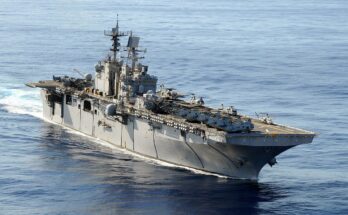
The dramatic deterioration of Haiti’s internal security environment over the past two years is of particularly acute concern for the current Dominican government. With the Haitian government having been cast into disarray after years of unrest and the 2021 assassination of President Juvenel Moise, a multiplicity of organized gangs have increasingly filled the vacuum of authority, precipitating a sharp spike in kidnappings and other criminal violence. Successive Dominican governments have therefore repeatedly sought to reinforce and militarize the country’s western border in response to the public mood and institutional input, with the incumbent Abinader administration having launched construction of a border wall in 2022.
With its ability to spend burnished by over a decade of robust economic growth, the Dominican government significantly increased the value of the country’s defense budget over the preceding decade in order to fulfill the operational and hardware procurement requirements associated with its two most critical security national priorities. From 2017 to 2020, Dominican defense spending increased at an annualized rate of roughly 9.1 percent in local currency terms. During that time, defense spending increased from DOP23.5 billion to DOP33.2 billion. Low inflation and favorable foreign exchange values likewise helped ensure that the budget’s local currency growth correlated to a meaningful expansion of the country’s purchasing power in real U.S. dollar terms.
After the implementation of such a dramatic splurge, the rate of annual defense expenditure growth temporarily stabilized around a more consistent 5 percent baseline for 2019-2020. The lingering financial crunch left in the wake of the COVID-19 pandemic compelled the government to implement a marginal budgetary reduction of 0.2 percent in 2021 in order to help balance the state’s annual budget profile. Still, the miniscule scale of this cut demonstrated the high priority leant to the defense sector by the current administration and its desire to preserve the budgetary gains of the preceding decade. Though the depreciation of the Dominican currency meant that the impact of the cut was felt more acutely with regard to its purchasing power in USD, even these reduced outlays were sufficient to sustain the military’s current force structure and operational tempo while the state financially recuperated from the heavy toll of the previous year.
The Dominican economy experienced growth well above expectations in 2021, and is projected to sustain this positive macroeconomic trajectory over the coming year. Leveraging the opportunity presented by these fortuitous circumstances, the Dominican government has infused the defense sector with a major enlargement of financial resources under the 2022 budget. The 2022 Dominican defense budget is valued at DOP33.2 billion, a 26 percent local currency increase over the previous year. The much expanded profile of the 2022 budget reflects both the administration’s desire to insulate the defense budget from rising global inflation rates and the perceived need to reinforce the capacity of the armed forces amidst the ongoing turmoil across the border in Haiti.
Under the 2022 defense budget plan, DOP15.6 billion, or 37 percent of the total, is allocated to the administrative purview of the Defense Ministry. The Army and Air Force are the next largest recipients, at DOP12.3 billion (30 percent) and DOP8.5 billion (20 percent), respectively. Finally, the Navy has been allocated DOP5.4 billion (13 percent). Personnel expenditures typically make up the majority of Dominican defense expenditures, accounting for roughly 60 percent of spending under 2020-2021 budget programs. Funding for procurement is generally only sufficient to address the most utilitarian of military requirements, resulting in a heavy reliance on donated hardware and systems. Still, with defense expenditures rising, the fulfillment of the Dominican Republic’s most pressing hardware requirements could be expedited in the coming years. Recent surges in commercial defense sales and Foreign Military Sales (FMS) agreements are potential indicators that such a trend was in the making even before 2021.
So long as macroeconomic growth rates and the Abinader administration’s public favorability ratings remain high, the Dominican Republic’s defense budget is apt to experience steady growth. Although the lingering financial wounds of the pandemic period and the Abinader administration’s cautious approach to deficit spending will place some constraints on the annual rate of spending, the need to account for rising worldwide inflation and ensure that the armed forces remain capable of fulfilling their mission amidst an uncertain regional and global security environment will continue to drive expenditures upward over the coming five years. Forecast International anticipates that Dominican Republic defense expenditures will experience a compound annual growth rate of 5.3 percent from 2022-2027.
A lifelong enthusiast of armored vehicles, Thomas serves as an analyst on Forecast International's Military Vehicles Forecast product. In addition, Thomas is responsible for updating the reports and analysis within Forecast International's International Military Markets – Latin America & Caribbean product. He also provides analysis for Forecast International's Airborne Retrofit & Modernization Forecast. Before this assignment, Thomas served as a research assistant for Forecast International's analytical team and has made written contributions to the Civil Aircraft Forecast, Military Aircraft Forecast, and Rotorcraft Forecast services. Thomas derives his knowledge from a multidisciplinary background, with a strong emphasis on the history and politics of Russia and the former satellite republics of the Soviet Union. He has studied in the Russian Federation at Saint Petersburg State University and is proficient in the Russian language at an advanced level.





